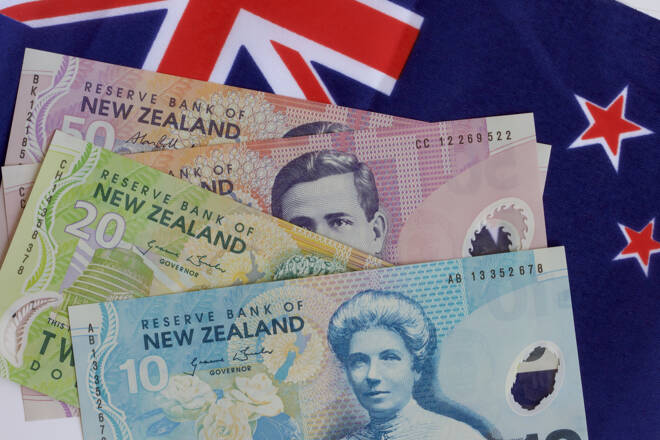Advertisement
Advertisement
AUD/USD and NZD/USD Fundamental Analysis: Policy Divergence: RBNZ Hikes Rates While RBA Pauses
By:
RBNZ raises benchmark cash rate by 50 basis points to 5.25%, while RBA hits pause button on rate hikes.
Highlights
- RBNZ raised rates by 50 basis points to 5.25%
- RBA paused rate hikes but remains committed to returning inflation to target range
- NZD initially rallied, but retreated on RBNZ’s dovish forward guidance
Overview
The New Zealand Dollar and Australian Dollar have seen significant movement in the Forex markets on Wednesday.
The Reserve Bank of New Zealand (RBNZ) raised its benchmark cash rate by an unexpected 50 basis points to 5.25%, surpassing economists’ expectations of a 25 basis points hike. This move takes the interest rate to its highest level since October 2008.
In contrast, the Reserve Bank of Australia (RBA) has paused its rate hikes for now. However, Governor Philip Lowe stressed that the pause does not imply an end to rate increases.
The RBA’s goal is to return inflation to the 2-3% target range, with inflation expected to reach the top of the range by mid-2025.
NZD/USD Retreats from Initial Rally as Markets Focus on RBNZ’s Dovish Forward Guidance
The New Zealand Dollar initially rallied as much as 1.1% to $0.6383, but then retreated to $0.6347 as markets focused on the bank’s dovish forward guidance following the rate hike.
The RBNZ’s guidance suggests a neutral and data-dependent policy stance going forward, with no explicit tightening bias.
Some economists predict that the OCR will remain on hold at 5.25% for the rest of the year, as the RBNZ emphasizes the need to maintain the current level of lending rates for households and businesses to curb inflation.
Australian Dollar Slips Against US Dollar and Kiwi Amid Policy Divergence
On the other hand, the Australian Dollar gave up earlier gains and was trading sharply lower against the US Dollar on Wednesday. Investors sold the Aussie against the Kiwi as the policy divergence between the two central banks grew, with the Australian currency falling 0.7% to NZ$1.0611, the lowest since late December.
Summary: RBNZ Hikes Rates, RBA hits pause button
In summary, the RBNZ surprised the market with a larger-than-expected rate hike of 50 basis points to 5.25%.
The move was driven by the need to curb persistently high inflation beyond the maximum sustainable level of employment, with the severe weather events in the North Island adding to the inflation risk.
The RBA has paused its rate hikes for now, but Governor Lowe stressed that this does not mean an end to rate increases, as the bank remains committed to returning inflation to the 2-3% target range.
Short-Term Outlook
In the short term, the forecast for the NZD/USD is uncertain, as the RBNZ’s guidance signals a neutral and data-dependent policy stance going forward.
The Kiwi may face resistance at $0.6390 and support at $0.6270. The AUD/USD is trading sharply lower at $0.6683, down 1% on Wednesday.
The Australian currency’s weakness is due to investors selling the Aussie against the Kiwi as the policy divergence between the two central banks continues to grow.
For a look at all of today’s economic events, check out our economic calendar.
About the Author
James Hyerczykauthor
James Hyerczyk is a U.S. based seasoned technical analyst and educator with over 40 years of experience in market analysis and trading, specializing in chart patterns and price movement. He is the author of two books on technical analysis and has a background in both futures and stock markets.
Advertisement
